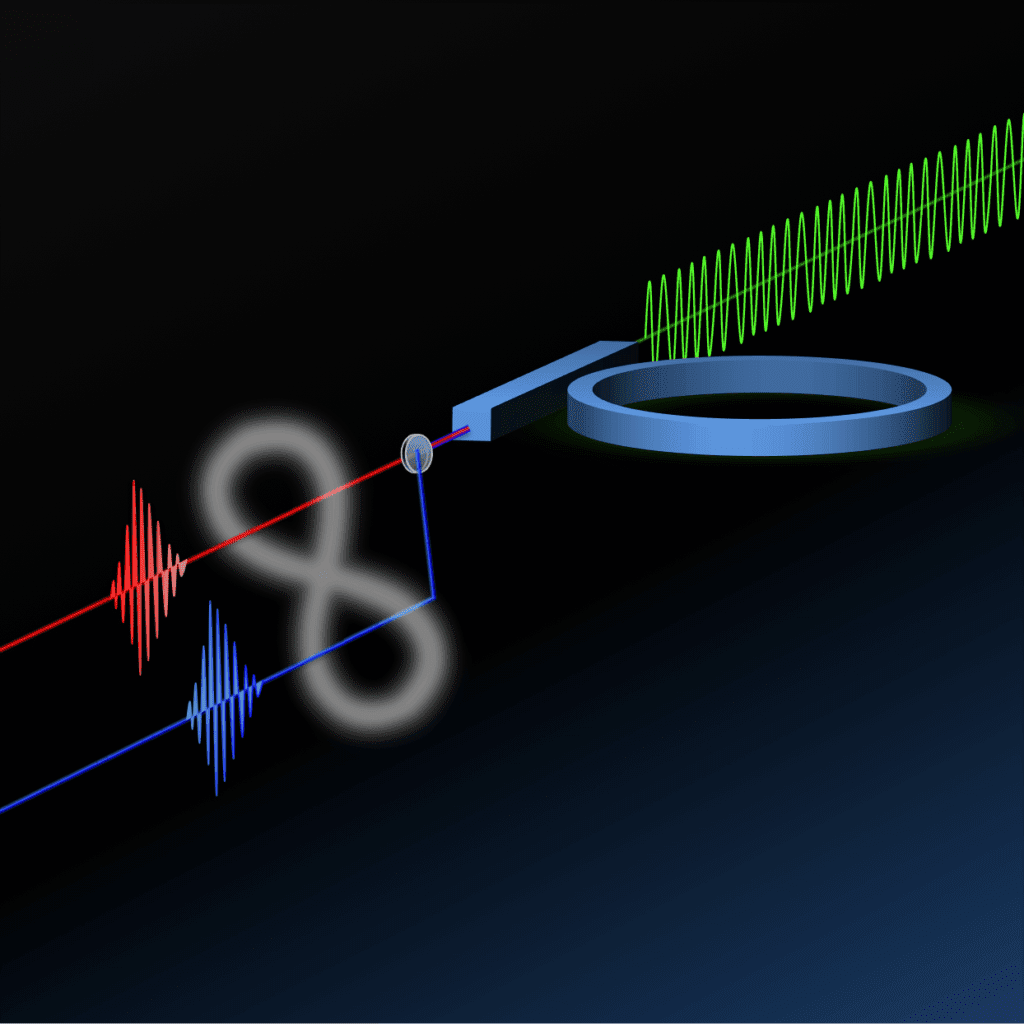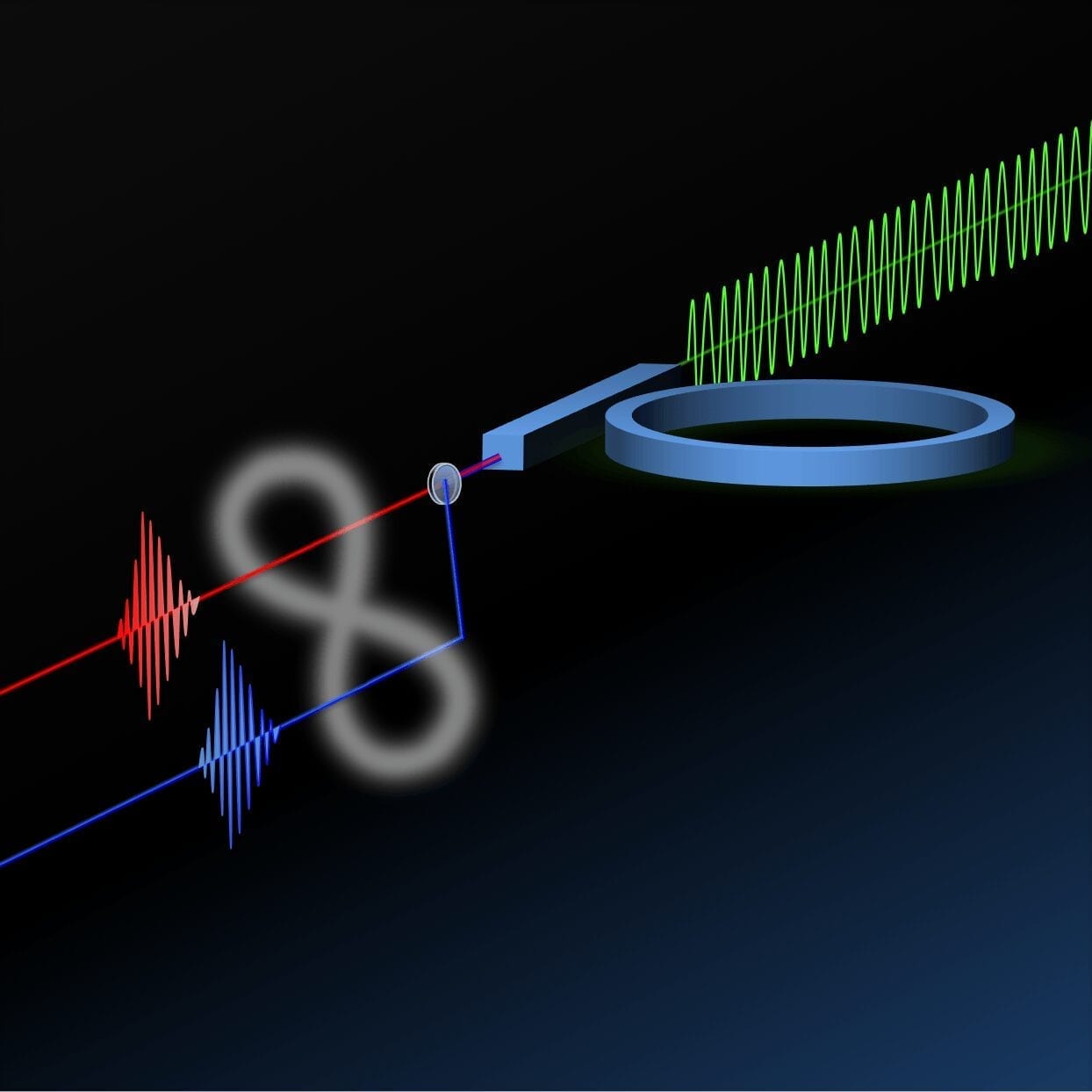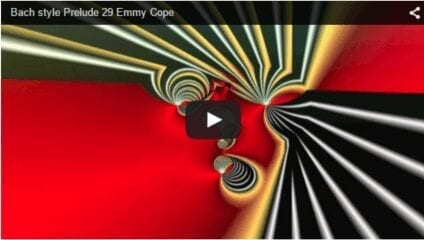
Unlike Bilbo’s magic ring, which entangles human hearts, engineers have created a new micro-ring that entangles individual particles of light, an important first step in a whole host of new technologies.
Entanglement – the instantaneous connection between two particles no matter their distance apart – is one of the most intriguing and promising phenomena in all of physics. Properly harnessed, entangled photons could revolutionize computing, communications, and cyber security. Though readily created in the lab and by comparatively large-scale optoelectronic components, a practical source of entangled photons that can fit onto an ordinary computer chip has been elusive.
New research, reported today in The Optical Society‘s (OSA) new high-impact journal Optica, describes how a team of scientists has developed, for the first time, a microscopic component that is small enough to fit onto a standard silicon chip that can generate a continuous supply of entangled photons.
The new design is based on an established silicon technology known as a micro-ring resonator. These resonators are actually loops that are etched onto silicon wafers that can corral and then reemit particles of light. By tailoring the design of this resonator, the researchers created a novel source of entangled photons that is incredibly small and highly efficient, making it an ideal on-chip component.
“The main advantage of our new source is that it is at the same time small, bright, and silicon based,” said Daniele Bajoni, a researcher at the Università degli Studi di Pavia in Italy and co-author on the paper. “The diameter of the ring resonator is a mere 20 microns, which is about one-tenth of the width of a human hair. Previous sources were hundreds of times larger than the one we developed.”
From Entanglement to Innovation
Scientists and engineers have long recognized the enormous practical potential of entangled photons. This curious manifestation of quantum physics, which Einstein referred to as “spooky action at a distance,” has two important implications in real-world technology.
First, if something acts on one of the entangled photons then the other one will respond to that action instantly, even if it is on the opposite side of a computer chip or even the opposite side of the Galaxy. This behavior could be harnessed to increase the power and speed of computations. The second implication is that the two photons can be considered to be, in some sense, a single entity, which would allow for new communication protocols that are immune to spying.
Read more here: Entanglement on a chip: Breakthrough promises secure communications and faster computers
The Latest on: Entanglement on a chip
[google_news title=”” keyword=”Entanglement on a chip” num_posts=”10″ blurb_length=”0″ show_thumb=”left”]
via Google News
The Latest on: Entanglement on a chip
- International Workers Day: In celebration of hands that endeavouron May 2, 2024 at 2:18 am
Intel said on April 18 that it had become the first company to assemble one of the machines made by Dutch computer chip equipment supplier ASML. These machines are expected to lead to new generations ...
- Nvidia Stock’s Tipping Point: Identifying the Catalysts that Could Derail the Chip Championon May 1, 2024 at 9:00 pm
Is Nvidia (NASDAQ:NVDA)’s publicity a jinx? CEO Jensen Huang appeared on 60 Minutes on April 28. That’s a sign you’ve made it, but it reminds readers that Nvidia stock represents one of only four ...
- High-intensity spatial-mode steerable frequency up-converter toward on-chip integrationon May 1, 2024 at 1:13 pm
Electronic Science discusses high-intensity spatial-mode steerable frequency up-converter toward on-chip integration. Integrated photonic devices consisting of micro-lasers, amplifiers, ...
- Scientists show that there is indeed an 'entropy' of quantum entanglementon May 1, 2024 at 6:08 am
Bartosz Regula from the RIKEN Center for Quantum Computing and Ludovico Lami from the University of Amsterdam have shown, through probabilistic calculations, that there is indeed, as had been ...
- Gangs forced out Haiti’s government. This FBI ‘Most Wanted’ gang leader claims they’re liberating the countryon April 30, 2024 at 10:31 am
A day with the notorious accused kidnapper Vitelhomme Innocent, whose armed group Kraze Baryé is among the allied gangs terrorizing the Caribbean nation.
- Australia signs deal worth almost $1b with PsiQuantum to build world's first 'useful' quantum computeron April 29, 2024 at 6:32 pm
The Queensland and Australian governments have set aside $470 million each to fund "the most complex machine ever built by humanity", in Brisbane.
- Quantum computing breakthrough could happen with just hundreds, not millions, of qubits using new error-correction systemon April 29, 2024 at 4:00 am
Scientists have designed a physical qubit that behaves as an error-correcting "logical qubit," and now they think they can scale it up to make a useful quantum computer using a few hundred.
- Eagles wanted new players with a built-in chip on their shoulderson April 28, 2024 at 10:20 am
The Eagles expect everyone who was on the team last year to have a chip on their shoulders over the way the season ended. That prompted them to look for new players who already have that mindset, both ...
- Intel used to dominate the U.S. chip industry. Now it's struggling to stay relevant.on April 25, 2024 at 5:00 pm
Intel, once the biggest and most valuable U.S. chip company, has been surpassed by numerous rivals in recent years due to a series of missteps. The shares plummeted further on Friday following ...
- Demonstration of heralded three-photon entanglement on a photonic chipon April 25, 2024 at 3:30 am
Photonic quantum computers are computational tools that leverage quantum physics and utilize particles of light (i.e., photons) as units of information processing. These computers could eventually ...
via Bing News











